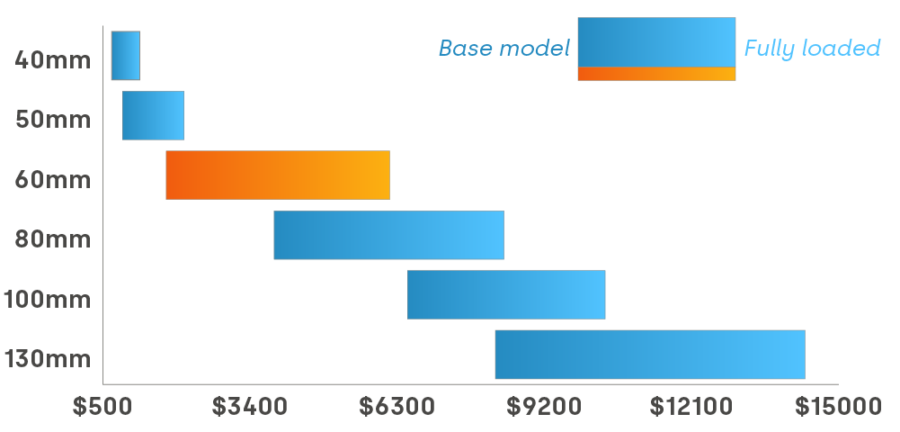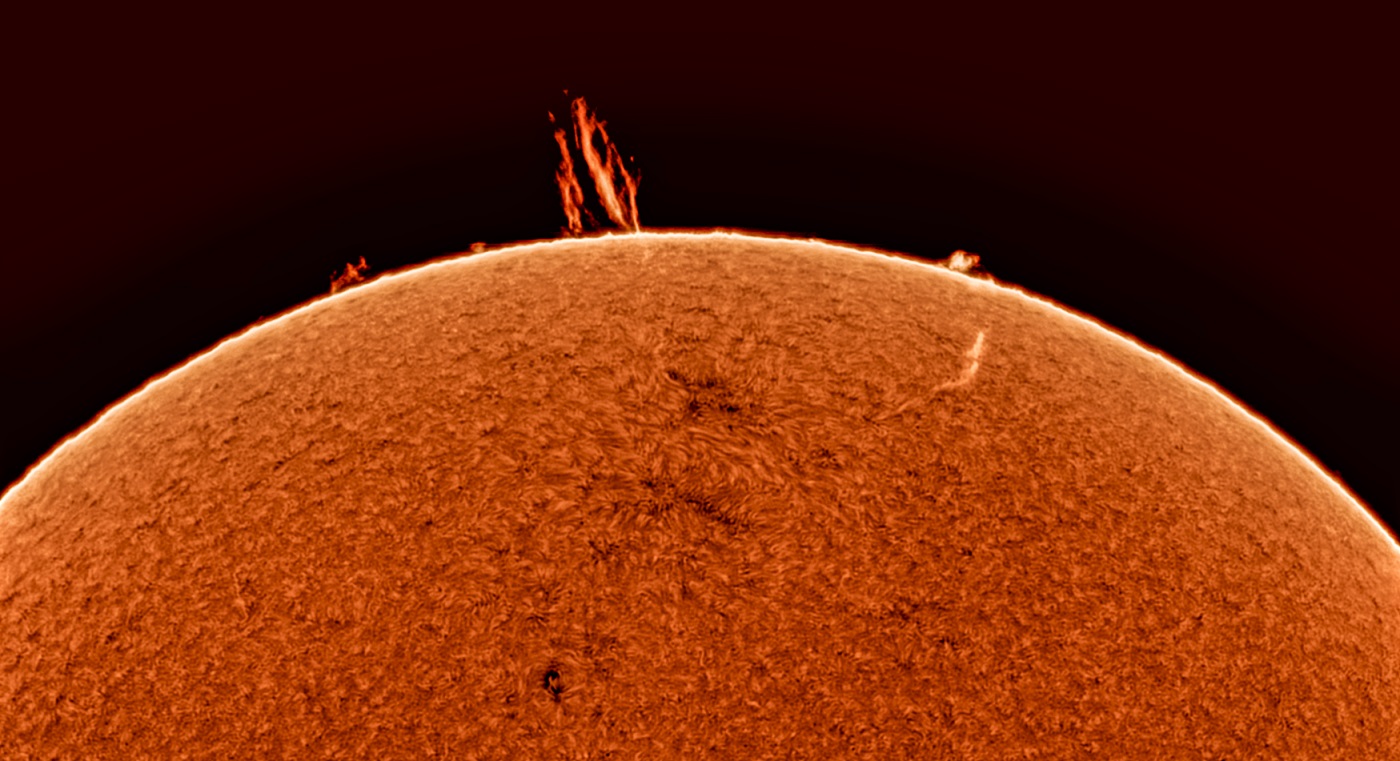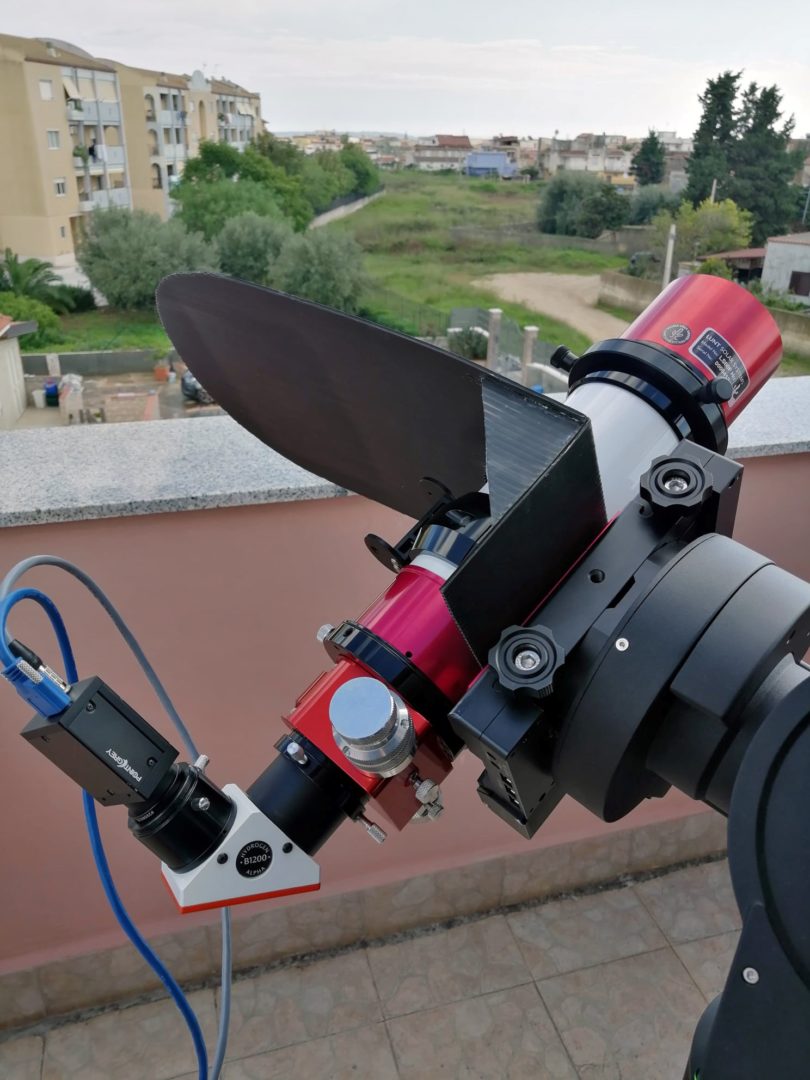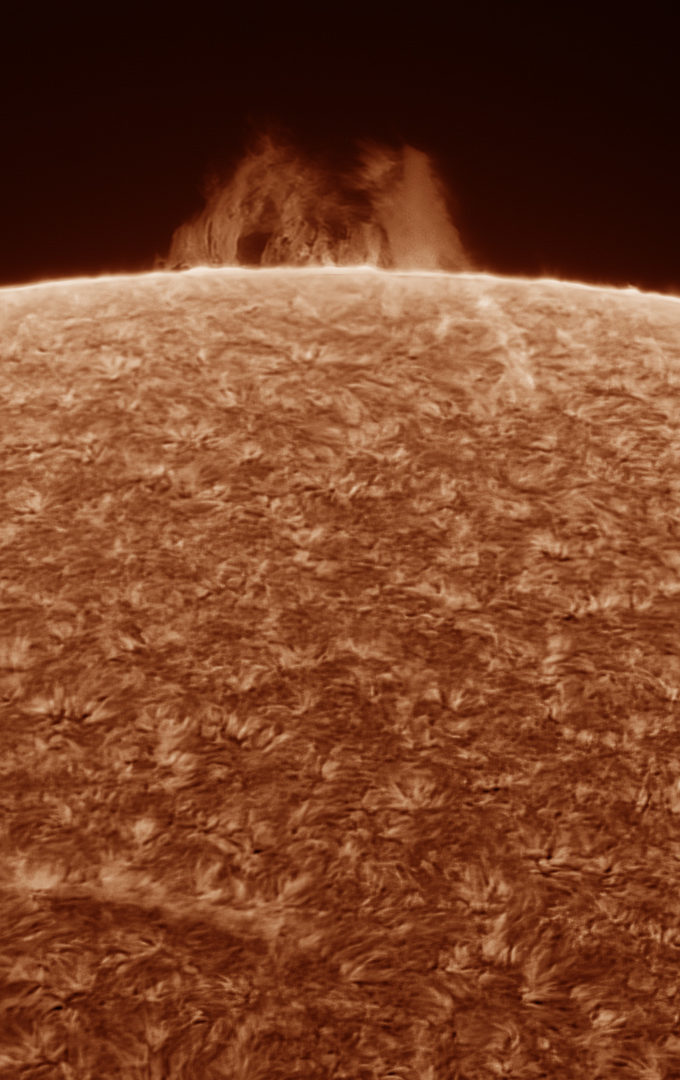The Lunt 60 mm Telescope is the smallest and most portable telescope of our new Universal line of day and night telescopes. But don’t let its smaller size fool you — our new versatile 60 mm telescope comes equipped with a new ED doublet lens, ready to shine across all wavelengths.
A true grab-and-go scope that delivers excellent views in all its configurations, the 60 mm is sure to make its way into your must-have travel accessories.
Providing stellar solar viewing in its default configuration with the provided Hydrogen Alpha Module, its 60 mm aperture allows the viewer to gaze at the Sun with an unobstructed clarity that is unparalleled in the industry.
Explore the intricacies and features present on the Sun with amazing detail with our Doppler True Pressure Tuning system. This allows you to change your view of the Sun with the finest adjustments, by simply turning a knob to adjust the pressure within the system.
With its newly updated optics, you can watch as the features virtually protrude from the Sun and see our closest star as you never have before, in all its splendor.
And like every Lunt Universal Telescope, after sunset, let the night sky shine! Conversion from hydrogen alpha mode has never been easier: Remove the hydrogen alpha module (and attached pressure tuner) from your telescope optical tube assembly (OTA), and replace with the focuser of your choice.
Now, you have a top-of-the-line, extra-low dispersion (ED) nighttime telescope to view planets, stars, the moon and anything else in between!
The Lunt 60 mm Universal Telescope does it all — with room to spare!
Enjoy Viewing Anytime, Day or Night
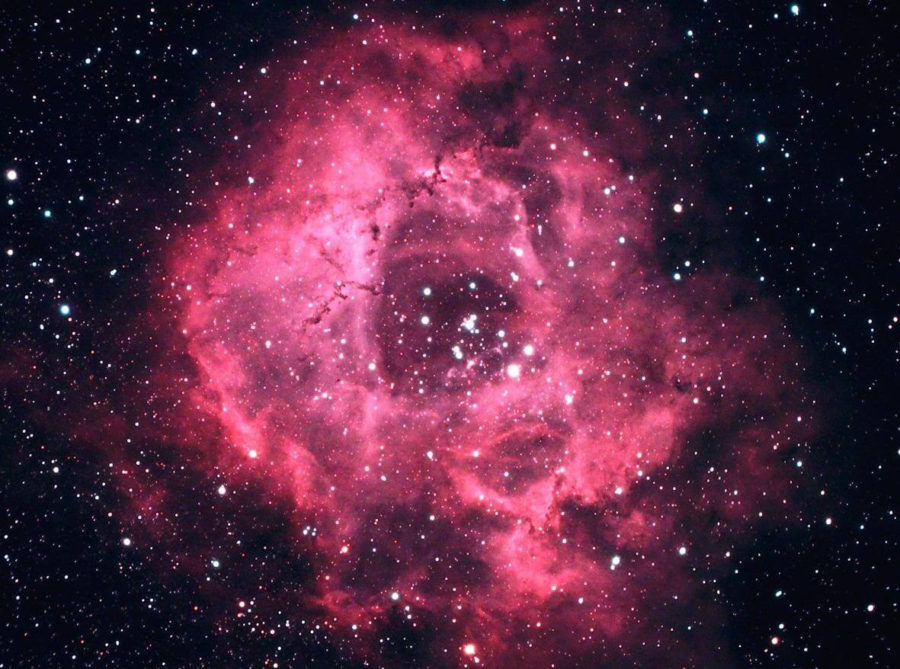
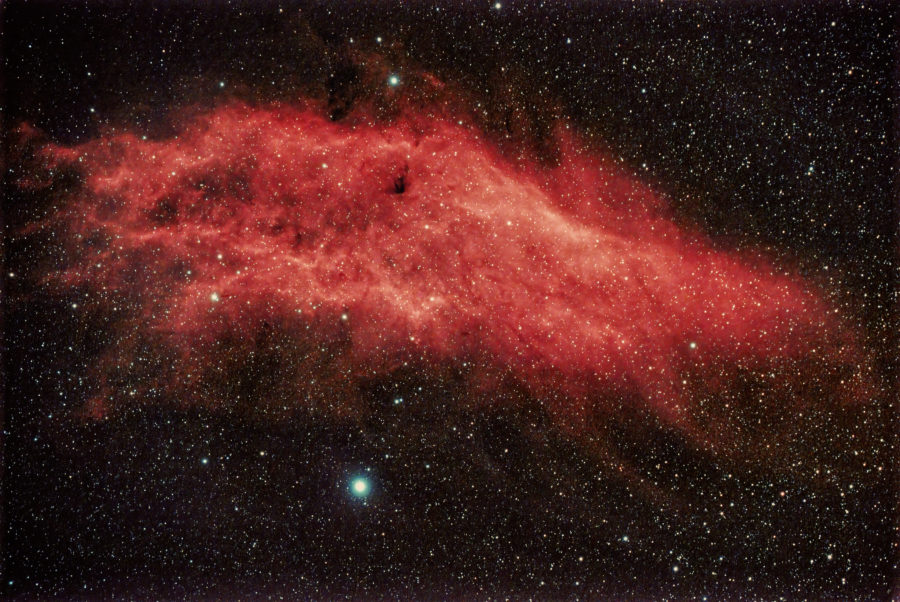
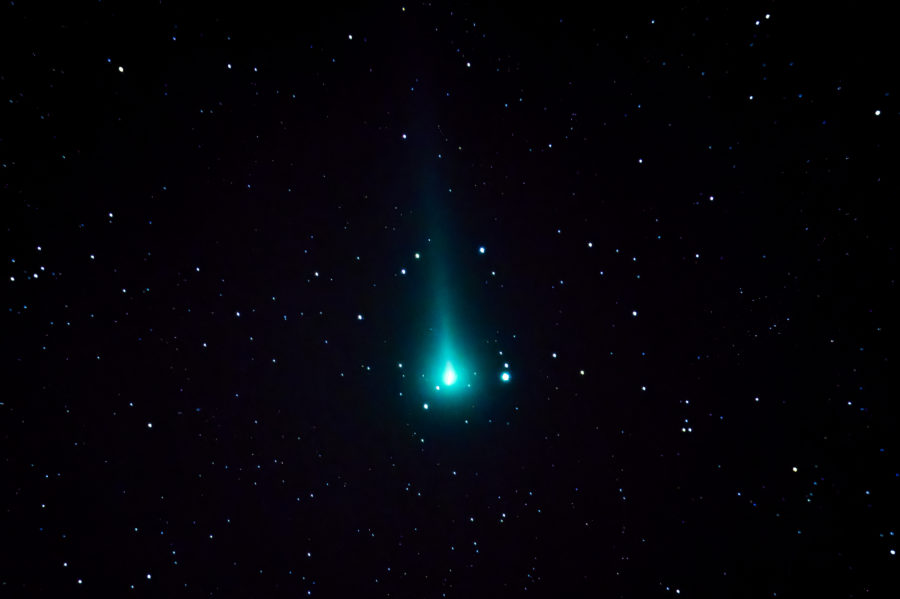
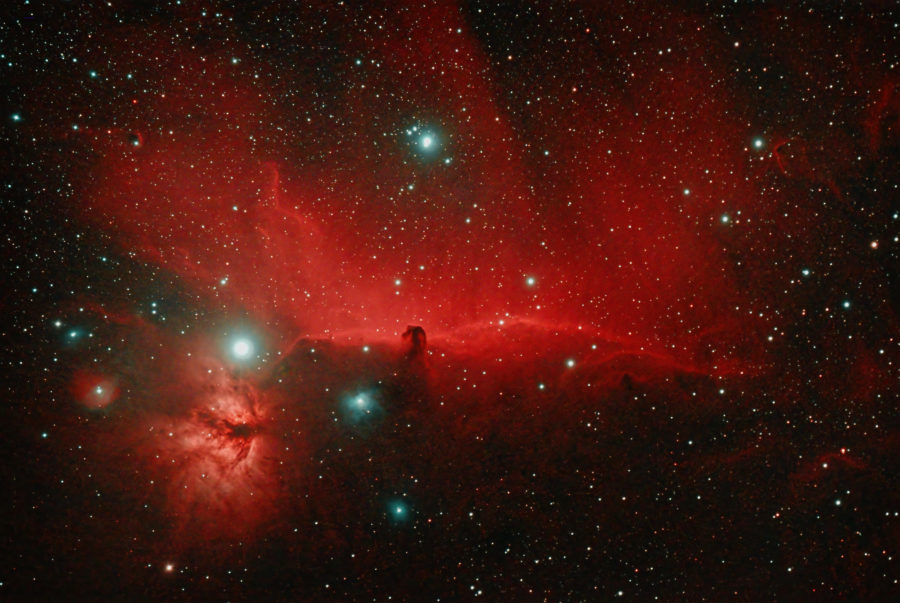
Lunt’s New Universal Telescopes are redefining what it means to have a Solar Telescope. Our complete Universal Telescopes come standard with Lunt’s exceptional Hydrogen Alpha Modules — and with no more than a few moments and a few screw turns, the system can be easily converted for use with alternative solar wavelengths or even terrestrial and night time viewing!
The Lunt 60 mm Universal Telescope is the smallest and most portable of our line of universal telescopes. You can enjoy this new versatile 60 mm telescope with its new ED doublet lens in all our available wavelengths, for a true grab-and-go scope that will deliver excellent views in all its configurations.
This scope can be use alongside some of your favorite accessories, such as the TecnoSky Binoviewers, during night or day! With its newly updated optics, you can watch as the features virtually protrude from the sun and see our closest star as you never have before, in all its splendor.
In Hydrogen Alpha configuration single-stack mode, the Lunt 60 mm Universal Telescope provides excellent viewing prowess at <.7 angstroms bandpass with Lunt’s renowned Doppler True Tuning (pressure tuned) system. And when the Sun finally goes down, don’t pack it in! Swap it out!
Versatility is the name of the game, and the 60 mm is the king of its own mountain. The ultimate in transportability, the 60 mm Universal Telescope is a manageable size appropriate to carry even on a plane while traveling.
It’s Like Having Six Telescopes in One


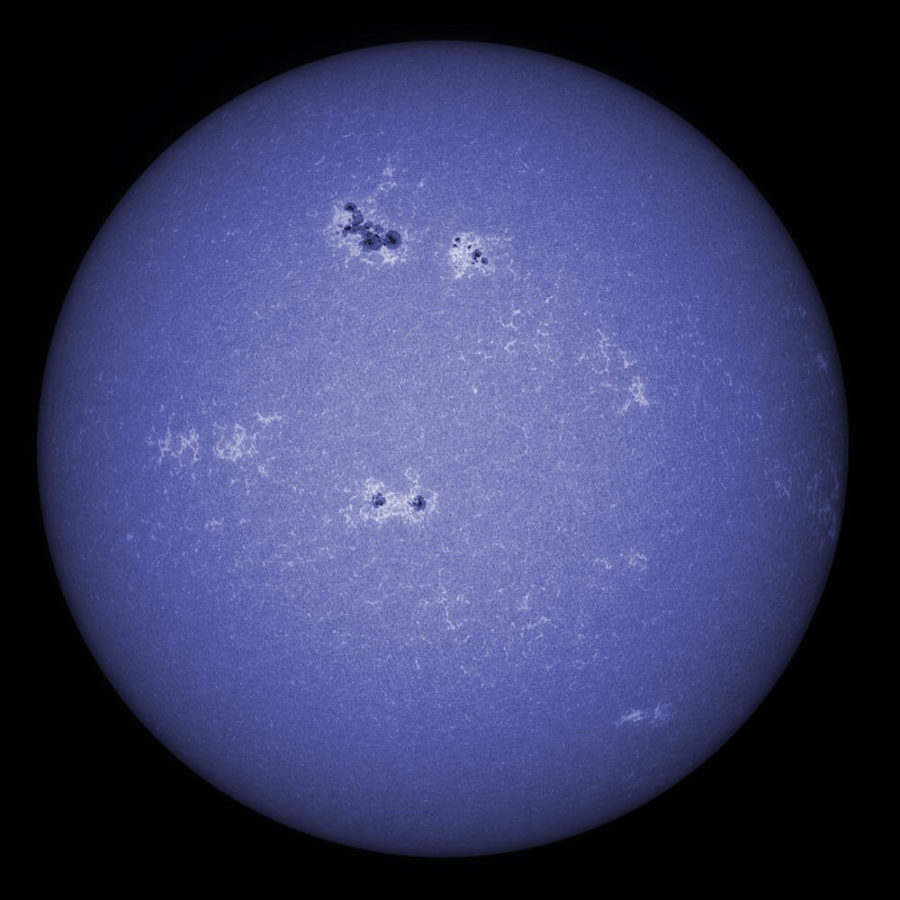
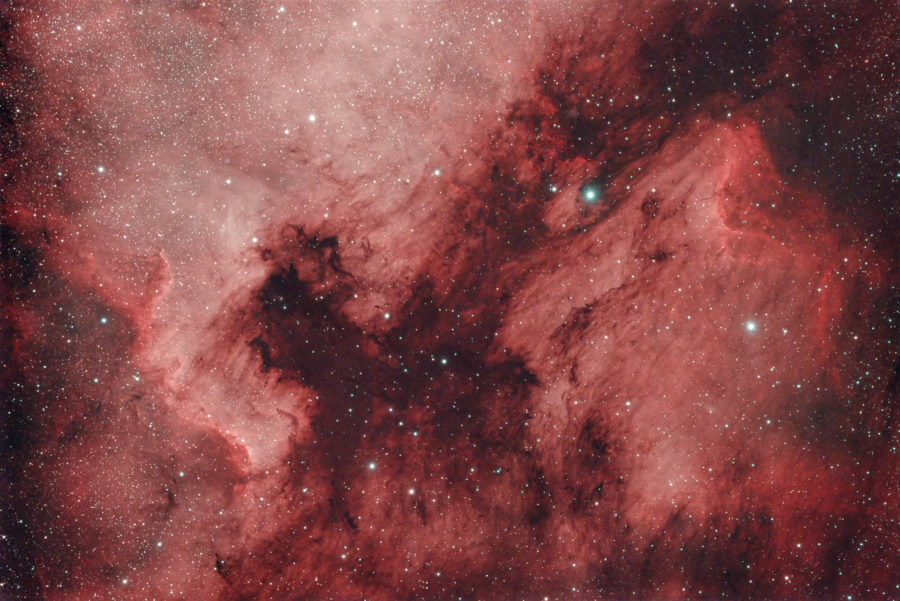
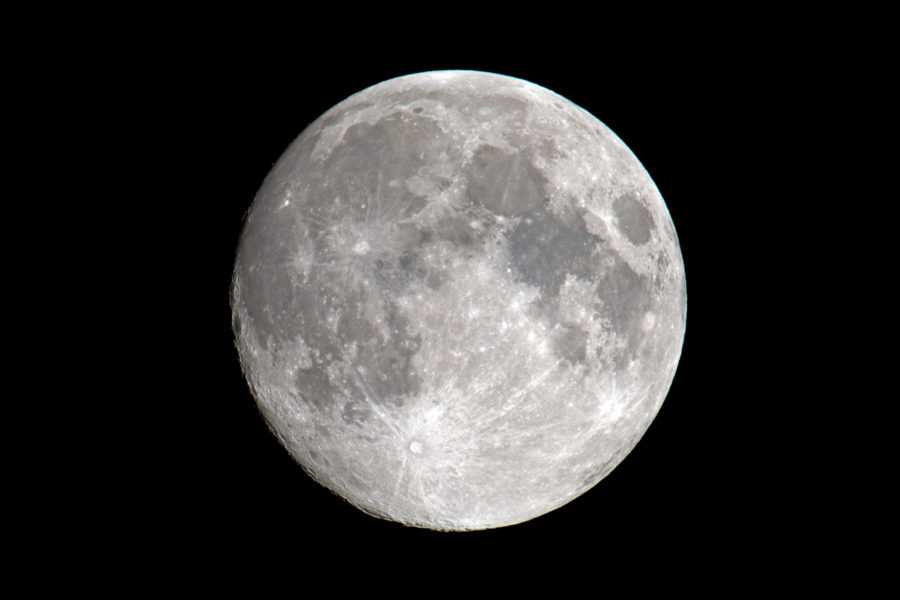

The Etalon – Heart of the Solar Telescope
The most dynamic, exciting way to view the Sun is by zeroing in on a specific, narrow bandwidth of light: the hydrogen-alpha (H-alpha) bandwidth.
The light arriving here from the Sun at the H-alpha frequency (656.28 nanometers) comes from a rarified layer of hydrogen gas slightly above the photosphere, the bright surface of the Sun. This hydrogen layer is called the solar chromosphere, and it’s invisible without using instruments to filter out brighter, competing bandwidths of light.
Due to its being dominated by magnetic energy, the chromosphere is where the most intense solar activity can be observed, including filaments, prominences, spicules and active regions.
The etalon, along with other components, provides us with this amazing view.
What is an Etalon?
An etalon is an interference type filter typically used in solar telescopes because of the desire for an ultra narrow bandpass.
An etalon is probably one of the simplest designs for an optical filter utilizing some of the most precise optical specifications. Due to it both being simple and in need of great precision, there are many compromises that can influence the quality of an etalon filter.
An etalon is comprised of 2 flat and parallel optical surfaces that have been optically coated with a highly reflective dielectric layer, with the high reflector layer peaking at the desired bandpass point for best results. These optical surfaces are separated by a gap. This gap can be either air or a solid material. The light resonates in the gap by internal reflection off the highly reflective layers on the surfaces. Through interference at this gap, only light meeting the correct angle of incidence to the surface is not “interfered with” and can pass; all other light is lost.
The main parameters that define an etalon are:
Bandpass
This is the width of the curve that defines the transmittance of the filter at 50% of the total transmission of the filter. An etalon’s transmission has a broad base and a sharp peak. Typically the peak transmission should be between 80-90%, so the bandpass of the etalon will be measured between the 40-45% points. For solar applications it is generally accepted that the lower this number, the better. Typical solar etalons have a bandpass of <1.0.
Bandpass is a function of the gap size between the high reflector plates. The larger the gap size, the narrower the bandpass. Bandpass is also a function of the reflectivity of the etalon high reflector plates. The higher the reflectivity, the narrower the bandpass.
Peak Transmission
In order to obtain good contrast it is important to maximize the peak transmission while minimizing the “out of band” transmission. To explain this statement, a surface that had zero reflectivity would have 100% peak transmission. However, because there is no reflectivity in the cavity, there is no interference, and thus, no filter (bandpass). A surface with 100% reflectivity would reflect all light before it entered the cavity, thus having zero transmission. The compromise is somewhere in between.
Peak transmission is a function of the reflectivity of the surfaces. The higher the reflectivity, the lower the peak transmission. Of course, there’s more to it than that.
Free Spectral Range (FSR)
The free spectral range is defined as the gap between the peaks of transmission plotted against wavelength. An etalon produces a “comb” of peak transmission across a broad range of the visible spectrum. This would be like a hair comb. One tooth of the comb would represent a peak transmission. This comb would then be missing about 12-14 teeth before the next peak transmission, or tooth.
In our case the FSR is more than 10 angstroms. This becomes important to our ability to block the unwanted peak transmissions using simpler filters. The narrower the FSR, the harder it is to block the transmissions you don’t want. Letting another peak transmission through will wash out the details.
FSR is a function of gap size. The narrower the gap, the wider the FSR.
Optical Flatness and Parallelism
Probably the most critical aspects of the etalon performance — to put it simply, the better the flatness and the parallelism, the better the etalon. The quality of an etalon is very much the function of precision polishing and gap maintenance.
When it comes to the specification of a solar telescope I often hear the bandpass stated out as a matter of fact. However, this bandpass is typically the theoretical value of the system based on the known parameters of reflectivity, gap size, and optical flatness. What one should realize is that bandpass is not the all defining specification of a quality system.
I could quite easily manufacture a 0.3 Å bandpass filter and everyone would be happy… Right? Not if its performance was any factor. An etalon with a peak transmission of 40% and a FSR of 4 Å is quite easy to manufacture. But I assure you, you wouldn’t want it in your scope.
When it comes to etalons there are typically a few things to look at: The bandpass is of very high concern as long as all other aspects of the optical system have been addressed. An FSR of greater than 10 Å is required in order to prevent out of band leaks.
Peak transmission is also important as long as it comes with a zero baseline. Signal to noise ratio is critical because it is what makes the brights bright, and the darks dark. No one wants to see a significant orange glow in the space around the Sun’s image, this simply washes out the edge details.
Double Stack Compatible
The Lunt 60 mm Universal Telescope can be double stacked with its own double stack unit, enabling a narrower bandpass down to less than 0.5 angstroms throughout the system! With a narrower bandpass, surface detail and features appear to explode off the Sun’s surface. Double stacking provides an extra dimension of solar viewing for both photographic and visual use!
Once you get used to double stacking and the operation of the DSII unit, you may never remove your DSII unit again! But if you do want to go back to single stack mode, the DSII is easily removed in seconds, and can be added back at any time!
Lunt Etalons are the Best
Lunt Etalons are precision crafted at our manufacturing facility in Tucson, Arizona.
We start with precision cut UV grade fused silica blanks that we purchase from a glass supplier in Massachusetts.
We use UV grade due to the higher specifications that UV grade material has for reduced bubbles and striae, both of which would negatively effect the performance of the finished etalon. UV grade costs more but we believe that high quality materials result in a superior product. Read more about how we make our etalons.
Interchangeable Blocking Filters
All solar telescopes must have a blocking filter.
This cut-off filter meets military specifications.
We offer two choices of blocking filter configuration:
Straight Through and Diagonal.
Straight thru Blocking Filters are generally used when the system will be used in imaging mode only.
The 34 mm Blocking Filter is only available in straight through mode. However, a standard star diagonal can be used for visual. We do not recommend a star diagonal for anything less than a 34 mm Blocking Filter due to the issue of not being able to get the eyepiece to focus. Diagonal systems are generally used when the system will be used for both Imaging and Visual.
It should be noted that ALL Lunt blocking filters utilize the same specifications of cut-off filter in their design. A larger Blocking Filter does not have a “better” specification than a smaller one. All blocking filters are cut from the same material and have the same bandpass (6 Angstroms), the same out-of-band blocking and the same temperature range.
What a Blocking Filter Does
A Blocking Filters (BF) is essentially a cut-off filter. It’s a combination of several filters that are designed to provide additional safety to the viewer and remove all out of band transmission from the etalon, allowing only the transmission at 656.28 nm (H-alpha) to pass.
Element 1
The blue glass filter in the nose of the BF is designed to attenuate the brightness of the image. Given that we needed basically a neutral density filter in this position we chose a filter that also absorbs infrared light (IR).
Element 2
The diagonal mirror itself is actually not a mirror. This element acts as a Long Wave Pass Filter while also designed to reflect the H-alpha light at a 45 degree angle. The effect is that any residual IR passes through the filter into the backing plate and the H-alpha light is reflected up to the eyepiece.
Element 3
The cut-off filter. This filter is designed to cut out-of-band transmission from the Etalon.
Element 4
A red filter. This filter is an ultraviolet light (UV) blocking filter. It is also coated with a very good anti-reflection coating so you do not see any back reflections when looking in the eyepiece. Element 3 is highly reflective and would cause serious back reflections without the addition of Element 4.
The Etalon is a highly precise optical filter that puts out a very narrow bandpass of light (<0.7 Angstroms) at the 656.28 nm point. It also puts out that same bandpass of light every 10 Angstroms in most of the visible spectrum. Basically the transmission curve of an Etalon looks like the teeth of a comb.
The Blocking Filter is used to transmit only the 656.28 nm tooth in the comb and remove all other transmission lines. It also provides additional safety features to the user by blocking and absorbing and residual IR and UV radiation.
It should be noted that all harmful IR and UV radiation are also removed in the Solar Telescope main body.
- Lunt Blocking Filters contain a 6 Angstrom FWHM Trimming Filter
- Lunt Blocking Filters eliminate ALL harmful UV and IR radiation
- Lunt Blocking Filters incorporate a standard T2 thread for adapting to imaging equipment
Viewing Directly vs. Capturing Images
Lunt telescopes are ideal for both direct viewing and imaging (capturing images with a camera). However, the telescope must be configured a bit differently to be used for both viewing and imaging than if it’s to be used only for viewing.
The solar telescope creates a cone of light that is focused onto an “image plane” at the back end of the telescope. The size and distance from the objective of this image plane is defined by the focal length of the system and the apparent size of the object (Sun).
When using the telescope in visual mode with an eyepiece the slide tube and/or focuser is generally racked out such that the eyepiece can be brought to focus onto the image plane. Various eyepieces have various back focus requirements but most remain within a fairly standard length. This generally places the Blocking Filter at the smallest portion of the light cone allowing the user to use a smaller aperture Blocking Filter.
However, if the Telescope is to be used in Imaging mode the slide tube and/or focuser will need to be racked in to bring the image plane onto the CCD surface. Generally speaking this can be as much as 50 mm for larger systems. This requirement for “in focus” effectively moves the aperture of the Blocking Filter up to a larger diameter of the light cone. Using a small (visual only) aperture Blocking Filter in imaging mode would effectively cut off the edges of the image. It also results in a vignetting of the image on the CCD.
The Sun is a fixed object. We can therefore pre-determine what size Blocking Filter is required after the decision of visual or imaging has been made as a function of the focal length of the telescope.
Lunt products were used to by NASA to image the 2017 USA Eclipse from Carbondale, IL. Lunt standard products have also been used in the past by NASA for the transit of Venus and Mercury, and by National Geographic for the Easter Island Eclipse. All of these were very successful live streaming events. Our products are ideally suited to imaging due to the ability get full disk images, rapid Doppler tuning, and ease of CCD adaptation to our systems.
Use a Monochromatic Camera
H-alpha is a very narrow emission line centered at 656.28 nm. This narrow wavelength is found in the red area of the visible spectrum.
The Solar Telescope transmits only this small portion of the spectrum. It transmits no Blue or Green. The most ideal imaging system is a monochrome camera or webcam.
DSLRs, mirrorless cameras and color webcams have significant drawbacks when it comes to imaging monochromatic light.
The chip of the color camera contains sensors that are designed to capture light in the green, blue and red. Due to these sensors being very sensitive to the red portion of the spectrum they only utilize 1 sensor for every 3 sensors in the blue and green. It should also be noted that these chips also have a red/IR blocking filter placed over the sensors to reduce the red sensitivity of the camera making it easier to control exposure settings. This red cutoff filter typically starts slightly below the 656 nm line and significantly reduces the performance of the imaging system when used for H-alpha imaging.
Because only one 1 sensor in 4 are actually sensitive to the red, the camera is actually only using 1/4th of its CCD, significantly reducing resolution.
Software within the camera system also uses color balancing of all 4 sensors. The net result is that the red sensor will be “balanced” against the other sensors that received no light. This further reduces the image quality. The simple answer is that the software has no idea how red the reds are because it has no other point of reference. This typically creates washed out and muddy red images that require significant retouch and post-processing.
Monochrome cameras are not only ideal, they are simpler to use and are relatively cheap. Monochrome cameras utilize all sensors as a photon dump and are excellent at defining contrast. The resulting image can be colorized by a simple method of turning the darker shades of grey to red and the mid shades to a lighter more orange hue. Some images even create a color pallet that includes yellow.
Lunt uses a monochrome camera system in all our live feeds (including the NASA Eclipse). We do not stack. We simply colorize and re-size in real time prior to broadcast.
Lunt Doppler True Pressure Tuning
Lunt Pressure Tuning is a highly precise method for tuning an internal etalon.
Doppler True Pressure Tuning allows for a shift into and away from the user. Adding a 3D component to the viewing experience.
While it has minimal effect on prominences due to their being at the edge of the disk, it does have an effect on filaments and active regions.
While looking at a filament at the center of the Sun the user has the ability to Doppler shift from the base of the filament to the tip, following the filament thru its structure toward you and away from you. This allows for enhanced visual and imaging capability for the observer as well as a research tool for the avid hobbyist.
The Lunt Pressure Tuning system provides an order of magnitude more precision to the tuning of the desired features than mechanical compression or tilt.
Because the etalon is suspended in a sealed cavity it is 100% altitude insensitive, the pressure tuner changes the refractive index of the air in the entire sealed cavity and applies no differential pressure to the etalon itself.
The air pressure system allows for immediate change to the center wavelength (CWL) without the use of electricity or heat. Heated systems require a waiting period while the CWL moves to the new position.
The Lunt etalon is not compressed by mechanical methods. Mechanical compression relies heavily on the ability to produce optically precise components that will not change over time.
Mechanical pressure systems physically squeeze the etalon’s plates together and are susceptible to differential heat expansion, “setting” over time, differential compression of the etalon, and bending of the etalon plates causing a widening of the bandpass of the total etalon area.
The Lunt Pressure Tuned Etalon sits in an optimized position in the optical path, and because no tilt is required, produces flat, uniform images at the CCD.
Lunt Solar Systems utilizes the new Pressure Tune System, or Doppler True Tuning system in most of our Solar and Universal Telescopes.
The system works because the etalons used in the current Lunt designs are air spaced.
Different Ways to Tune an Etalon
The center wavelength passed through the etalon can be manipulated by several methods, with various pros and cons…
Tilt Tuning
This changes the angle of the light at the interface of the high reflector/air layer, having the effect of moving the center wavelength toward the blue. Tilted etalons are typically factory tuned slightly high of the H-alpha line so they can be tilted on band.
This process is fairly ideal for front mounted etalons where the F ratio of the Sun is within a pretty acceptable tilt/tune range of the etalon. However, the etalon can only be tilted on one axis and significant tilt will lead to banding (a ripple effect) of the image. This effect is magnified when the etalon is placed internally to the optical system.
Slight changes in barometric pressure and/or a change in altitude will affect the CWL due to the change in refractive index of the spacer layer caused by the change in air pressure. Air-spaced etalons are air pressure sensitive.
Heating
Heating has the effect of increasing and decreasing the distance between the Etalon plates by thermal expansion of the spacer material between the etalon plates. While this is an effective way to tune an etalon it does not allow for rapid Doppler shifting of activity. Heating requires electricity.
Typically, heated etalons are solid etalons. In that the spacer layer is a solid layer of glass or mica. This limits the size that these etalons can be made.
Because the etalon is solid by design it requires an extended focal length. Typical solid etalons need to be housed behind a f30 or greater system.
Because the focal ratio of the system was expanded before the etalon the image is generally highly magnified. The trade-off is that the etalon aperture would need to be large enough to accept the longer focal ratio optical path so the focal ratio could be reduced post-etalon for wide angle viewing. However, large solid etalons are very expensive to produce.
Doppler True Pressure Tuning
This method solves most of the issues of tilt and heat systems. It should be noted that Lunt internal pressure tuned etalons are matched to the aperture and focal length of each telescope. Our collimating system allows for the full aperture of the optical path through the etalon at the optimized position. This allows us to re-focus the full optical path back down to the image plane, allowing for wide angle (full disk) viewing. Of course, various eyepieces can be used to zoom in on desired features.
Our internal etalons range in size from 15 mm to 100 mm.
The following diagrams illustrate the effects of Lunt Doppler True Pressure Tuning:

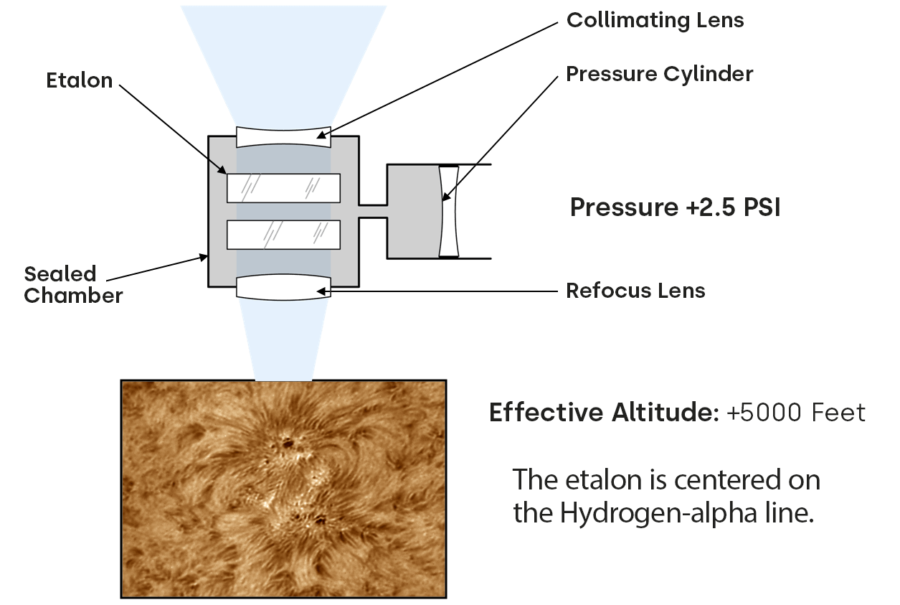
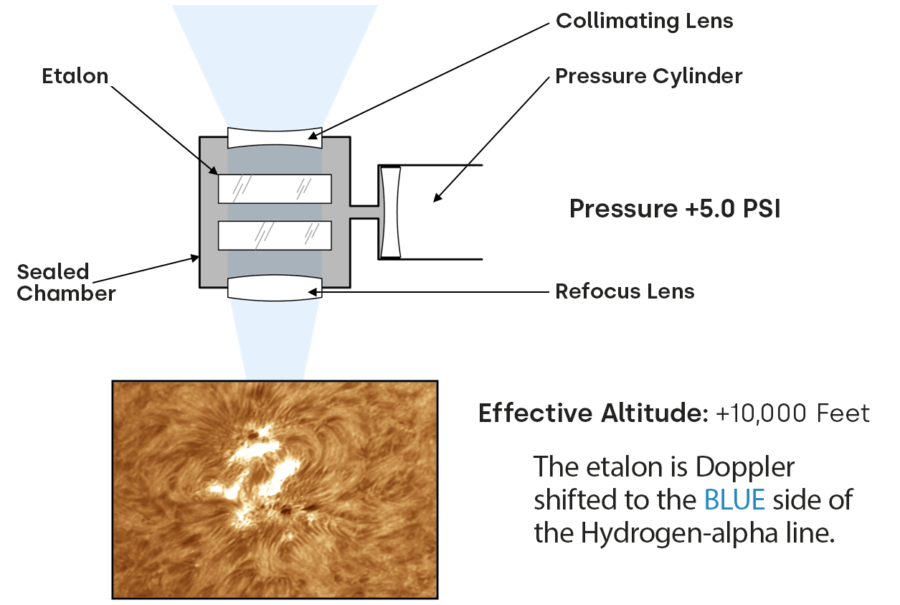
Effective Altitude of +0 Feet — The internal etalon is at ambient pressure. The plunger of the pressure cylinder has just been removed and replaced. The factory tuning of the etalon is slightly low, putting the CWL at the red wing of the hydrogen line. This provides a view of less energetic features in the chromosphere.
Effective Altitude of +5000 Feet —The air pressure inside the sealed chamber has been increased. At this point the CWL of the bandpass is at 656.28 nm. At this position we are looking at the center of the hydrogen-alpha line and the energy associated with that wavelength.
Effective Altitude of +10,000 Feet —The system is fully pressurized. This pressure is equivalent to a very high altitude change. The air inside the sealed chamber has been compressed due to the reduced volume. As a result the refractive index of the air has increased and caused the CWL of the etalon to move to the blue or high energy side of the Hydrogen wavelength.
Industry-Leading Quality and Safety
High Safety Standards
At Lunt Solar safety is our top priority. When Lunt Solar started making solar telescopes and filters, the subject of eye safety was at the forefront of our design. Our designs were approved by a senior ophthalmologist professor at a leading university of ophthalmology in Canada. A safety criterion was determined for both UV and IR transmission. This criterion basically set the bar at less than 1×10-5 (T) for any hazardous radiation.
Several standalone filters in Lunt products meet this criterion as a single unit. However, Lunt sets double and sometime triple standards for this requirement so that in the unlikely event one filter fails, the user will still be fully protected.
Our Filters
Energy Rejection Filter
The filtering of a Lunt system starts with a “true” energy rejection filter at the front of the system. This filter is unique to Lunt, and blocks both dangerous UV and IR.
On smaller telescopes the ER filter is seen as a red-looking filter installed at a slight angle (to remove internal ghosting). This is either installed at the front of the scope or just inside the main objective.
On larger aperture telescopes, Lunt puts an additional IR blocking filter onto the front surface of the main objective. This will remove all heat load from the internal parts. Even on these large aperture systems we still provide the secondary red ERF just inside the objective.
Etalon
The next “filter” in the system is the heart of the system, the etalon. While the etalon was not designed as a safety filter, it does have a very high reflective surface that rejects most UV (T). Significantly, this would reject the majority of all IR if no prior IR filters were present.
BG Filter
The third filter is the Schott-designed BG (Blue Glass) filter. This filter is also created to absorb any residual IR.
Long Wave Pass Filter
The next filter is commonly called the diagonal “mirror” However, it is not a mirror at all. Inside the diagonal is a Long Wave Pass filter. To begin with, it is designed to reflect a specific percentage of the 656 nm wavelength to attenuate the image to a manageable brightness. It sits at a 45º angle and passes through any IR into the backing plate.
Blocking Filter
The next filter is the blocking filter. Again, this is not a safety filter unto itself. As the name implies, it blocks out-of-band wavelengths and allows the H-alpha waves to pass.
Red Glass Filter
The final filter is another piece of the red glass (without the IR coating). This glass blocks 100% of all UV. It also acts to stop the back reflection of your eyeball from the very bright BF.
Redundant Filters
People ask why we incorporate so many IR and UV filters in the system. The multitude of safety features we employ insures that our customers will be protected. They are protected even if they use our products improperly. For instance, should a person accidentally place a standard night time diagonal in the rear of a solar telescope, the view would be bright, but safe.
Because of the addition of multiple filters and safety features, a person simply standing in the sunlight will receive more ambient UV and IR radiation to the eye than when they are looking through one of our solar telescopes.
Lens Coating:
Lunt purchases our raw etalon glass materials from an ISO-qualified company on the East Coast of the United States. We grind, edge, bevel, and polish all the glass needed for the etalon and filter systems in-house in Tucson, AZ. Some coatings are outsourced to a facility that maintains a coating specific to our requirements.
Our coating facility has the required ability to produce anti-reflective coating at less than 0.1% reflectivity (R) (typically in the 0.06%R range). They also hold the high reflector coatings to better than +/-1%. The ability to control the coating processes to such high accuracy has allowed us to make precision modifications to the coating formulas, which have proven to increase contrast through the reduction of background noise.
Quality Assurance:
Each coating batch is provided with full scans of the coating applied and is certified to meet any and all safety requirements. Some of our precision-coated filters are provided to us from a US military-qualified company who provides full military certifications with every filter.
All Lunt Solar products are 100% safe when used as directed and are shipped from the factory free of any damage or defects. If a Lunt instrument is ever dropped or damaged, it should be returned to the factory for testing and re-certification.
Due to different optical arrangements in each design, a Lunt solar product should never be mixed and matched with components made by other companies.
One of the most important questions to ask when looking at a Solar Telescope is whether or not is has taken your safety into the highest consideration.
Does the system have redundant safety features to protect you if something should fail?
Does the system come with a Blocking Filter that contains additional safety features?
Lunt 60 mm Telescope vs. Competition
| 60 mm | Lunt | Coronado | DayStar |
|---|---|---|---|
| Objective Aperture | 70 mm (H-alpha mode 60 mm) | 70 mm (H-alpha mode 60 mm) | 60 mm |
| Objective Type | Professional Grade ED Doublet | Commercial Grade Doublet | Commercial Grade Doublet |
| Objective Material | FLP51 | *Not Specified | *Not Specified |
| Objective Coating | Ion Assist Broadband AR | *Not Specified | *Not Specified |
| Universal Capabilities | H-alpha, CaK, White Light, Lunar, Planetary, Deep Space, Terrestrial | H-alpha | H-alpha |
| H-alpha Option | H-alpha Modular Etalon | H-alpha Fixed Etalon | H-alpha Internally Fixed Etalon |
| Etalon Clear Aperture | 40 mm | 40 mm (13 mm Central Obstruction) | *Not Specified |
| Etalon Bandpass | <0.65 Å Single Stack, <0.45 Å Double Stack | <0.7 Å Single Stack, <0.5 Å Double Stack | *Not Specified |
| Etalon Wavelength | 656.28 nm | 656.28 nm | 656.28 nm |
| Etalon Material | UV Grade Fused Silica | Commercial Grade Fused Silica | Mica |
| Etalon Tuning | Barometric Pressure Tuning | Mechanical Compression | Tilt |
| Etalon Doppler Shift Timeframe | Instant | Instant | Instant |
| H-alpha Blocking Filter CA | 6 mm, 12 mm, 18 mm | 5 mm, 10 mm, 15 mm | *Not Specified and Fixed |
| H-alpha Blocking Filter Bandpass | 6 Å | *Not Specified | *Not Specified |
| H-alpha Blocking Filter Type | Interchangeable Straight Through or Diagonal | Interchangeable Diagonal | Fixed Straight Through Only |
| CaK Option | 2.2 Å Filter/Wedge | **NA | **NA |
| CaK Filter Wavelength | 393 nm | **NA | **NA |
| White Light Option | Front Mounted Filter, Rear Mounted White Light Wedge | **NA | **NA |
| Lunar, Planetary & Deep Space Option | Rear Mounted Star Diagonal with ND and Polarizing Filter | **NA | **NA |
| Terrestrial Option | Rear Mounted Erecting Diagonal | **NA | **NA |
| DoubleStack Compatible | Yes | Yes | No |
| Focuser Options | Dual Speed Lunt Crayford, Dual Speed Rack and Pinion, Dual Speed Feather Touch | Helical | Helical |
| Mount Type | CNC Machined Clam Shell and Vixen Dovetail | CNC Machined Clam Shell and Vixen Dovetail | Mounting Foot |
| Country of Manufacture | USA | Mexico | USA |
**NA – This option is not available for this product.
Lunt 60 mm Telescope Specifications
- Telescope Type: Universal Day and Night
- Universal Capabilities: H-alpha, CaK, White Light, Lunar, Planetary, Deep Space, Terrestrial.
- Aperture: 70 mm Native, 60 mm H-alpha
- Objective Type: Professional Grade ED Doublet
- Objective Material: FLP51
- Objective Coating: Ion Assist Broadband AR
- Focal Ratio: F/7
- Focal Length: 420 mm
- Focuser Options: Dual Speed Lunt Crayford, Dual Speed Rack and Pinion, or Dual Speed Feather Touch
- Mounting: CNC Clamshell Mount and Vixen Style Dovetail
- Storage: Aluminum Finished Hard Case with Fitted Foam
- H-alpha Etalon Type: Modular
- Etalon Wavelength: 656.28 nm
- Etalon Bandpass: <0.65 Å Single Stack, <0.45 Å Double Stack
- Etalon Material: UV Grade Fused Silica
- Etalon Tuning: Doppler True Barometric Pressure Tuning
- Doppler Shifting: Instant
- Blocking Filter Size: 6 mm, 12 mm, 18 mm Diagonal and Straight Through
- Blocking Filter Bandpass: 6 Å
- Sun Finder: TeleVue Sol Searcher compatible
- CaK* Filter Type: Rear Mount CaK Diagonal
- Filter Sizes: 12 mm, 18 mm, Diagonal and Straight Through
- Filter Wavelength: 393.4 nm
- Filter Bandpass: 2.2 Å
- White Light* Filter Type: Front Mount Film Filter, Rear Mount White Light Wedge
- Filter Bandpass: Broadband White Light. AR/UV Blocking
- Lunar, Planetary, Deep Space, Terrestrial: Converts to a conventional professional grade APO triplet for all your nighttime requirements. See optional equipment for additional specifications.
- Theoretical Max Magnification: 100 x
*Optional Capabilities
Lunt Telescope Price Range Comparison
